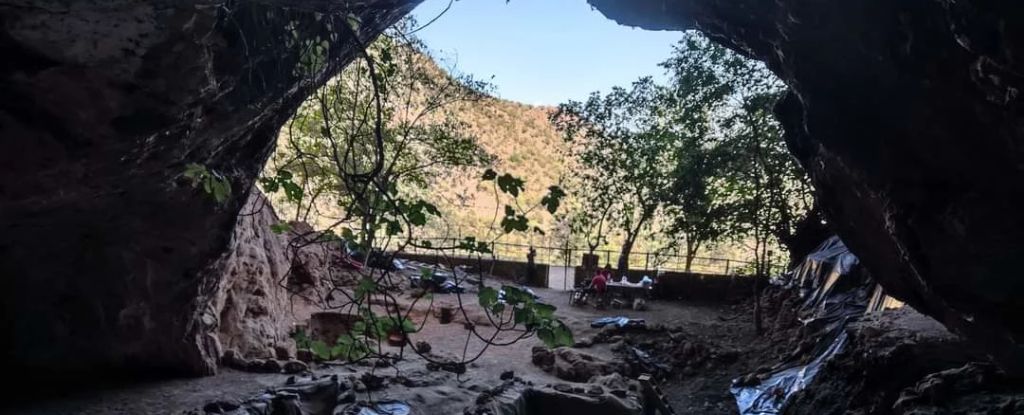Products You May Like
Anyone indulging in a paleo-style diet might want to think about adding a few more vegetables.
The teeth and bones of pre-agricultural human hunter-gatherers who lived some 15,000 years ago in what is now Morocco reveal that their diet – long thought to have been significantly loaded with animal protein – was actually weighted much further in the direction of plant-based food. It seems plants may have even been used to wean infants, the study found.
“Our results unequivocally demonstrate a substantial plant-based component in the diets of these hunter-gatherers,” write a team led by anthropologist Zineb Moubtahij of the Max Planck Institute for Evolutionary Anthropology in Germany.
“This study underscores the importance of investigating dietary practices during the transition to agriculture and provides insights into the complexities of human subsistence strategies across different regions.”
It’s assumed that before the rise of agriculture, ancient humans ate a lot of meat and animal products.
We know they ate some; archaeological sites have been found littered with animal remains that bear evidence of being processed for consumption. Since plant matter is less likely to remain intact through the millennia, it’s less clear how much of the diet of ancient humans and their relatives consisted of roots, fruits, stems, flowers, and leaves.
We now have sophisticated ways of finding out, which Moubtahij and her colleagues used on human remains associated with the Iberomaurusians – a culture that inhabited Taforalt cave in Morocco during the tail end of the Pleistocene 15,000 years ago.
Even the most robust of a person’s remains tend to be bereft of soft tissue after thousands of years in the dust. Fortunately traces of their diet can still be recovered. In particular, ratios of various isotopes record surprisingly detailed specifics about the nature of the foods they consumed.

That’s because distinct combinations of isotopes in the soil are taken up into plants as they grow. When consumed, the isotopes replace a small portion of the calcium in their bones and teeth of the human that ate them, preserving the combination as a signature ratio.
The researchers examined 25 teeth and seven bone samples from 17 Iberomaurusian individuals, studying the ratios of zinc and strontium in tooth enamel, carbon and nitrogen in bone collagen, and amino acids from bones of both humans and animals recovered from the site.
They found significant evidence for substantial plant consumption. For example, dietary zinc is most likely to be obtained from animal sources. There was a minimal difference in zinc isotope ratios between the Iberomaurusian individuals and herbivorous animals from the same region – although enough of a difference to find that the Iberomaurusians did eat some meat. The authors proposed the population may have relied on their vegies for protein much in the same way Neolithic farmers would have.
Fascinatingly, one of the individuals examined was an infant who died between six to 12 months of age. Isotopes in the baby’s bones were consistent with a transition from their mother’s milk onto a diet largely consisting of plant foods, the researchers found.
Other evidence at the site is consistent with a diet rich in flora. There are grinding stones that could have been used to process foods such as pine nuts, acorns, and legumes. Also, the remains at the site display a high incidence of dental cavities, which is consistent with starchy foods such as acorns and pine nuts. And archaeobotanical remains are also consistent with acorns, pine nuts, and legumes.
Taken together, the results suggest that the Iberomaurusian culture was heavily reliant on plants for survival, perhaps in response to the fluctuating seasonal availability of the Barbary sheep that was the main source of meat at Taforalt.
This, in turn, suggests that we can’t always assume a heavy reliance on meat products in prehistoric human populations, and that diets varied significantly from culture to culture and place to place.
“Our study highlights the importance of the Taforalt population’s dietary reliance on plants, while animal resources were consumed in a lower proportion than at other Upper Palaeolithic sites with available isotopic data,” the researchers write.
“The potential early weaning of infants at Taforalt reinforces the notion of a plant-based food focus for the population, potentially extending to the primary source of nutrition for infants.”
The research has been published in Nature Ecology & Evolution.
